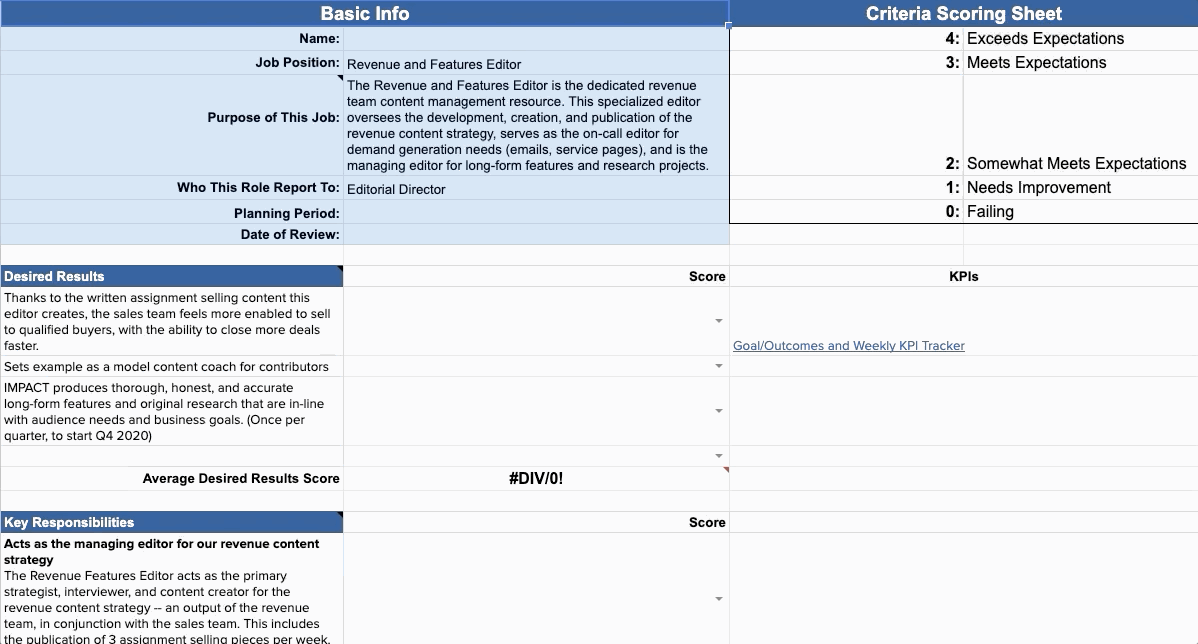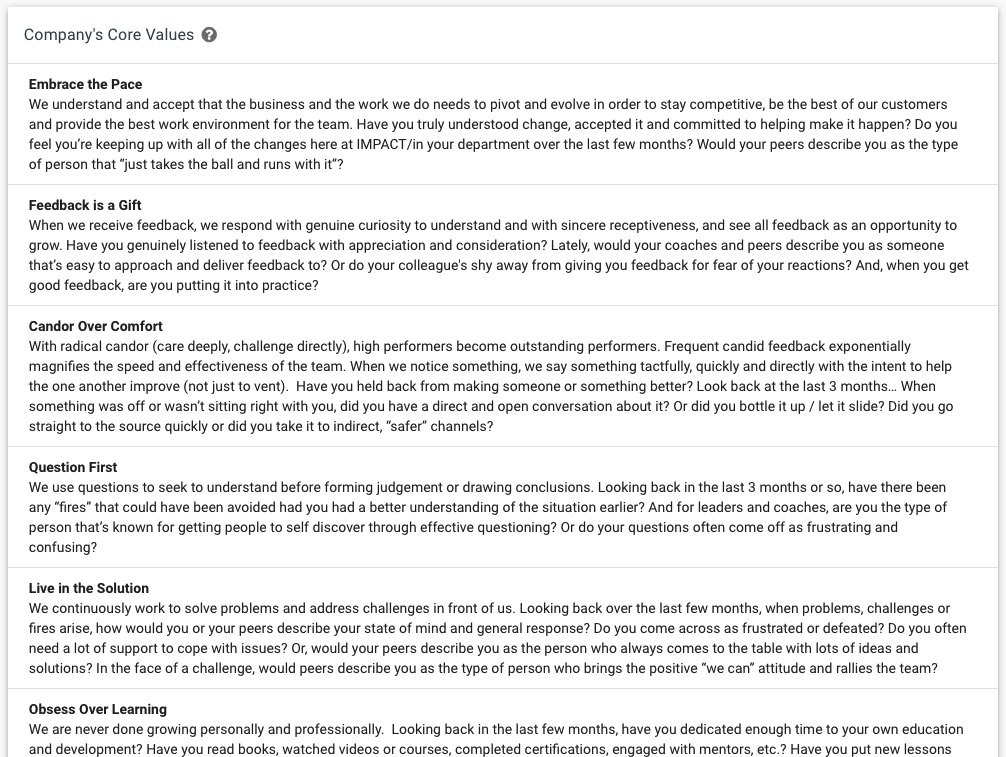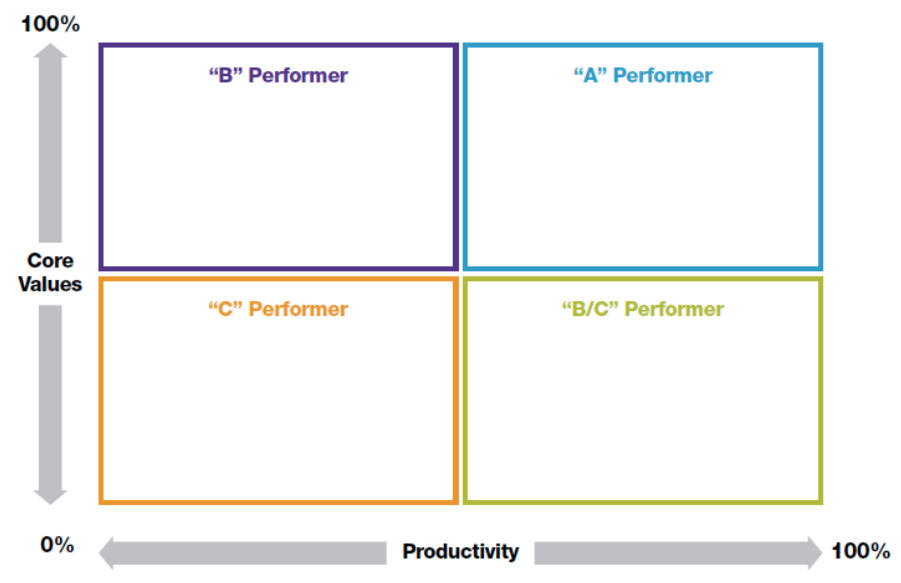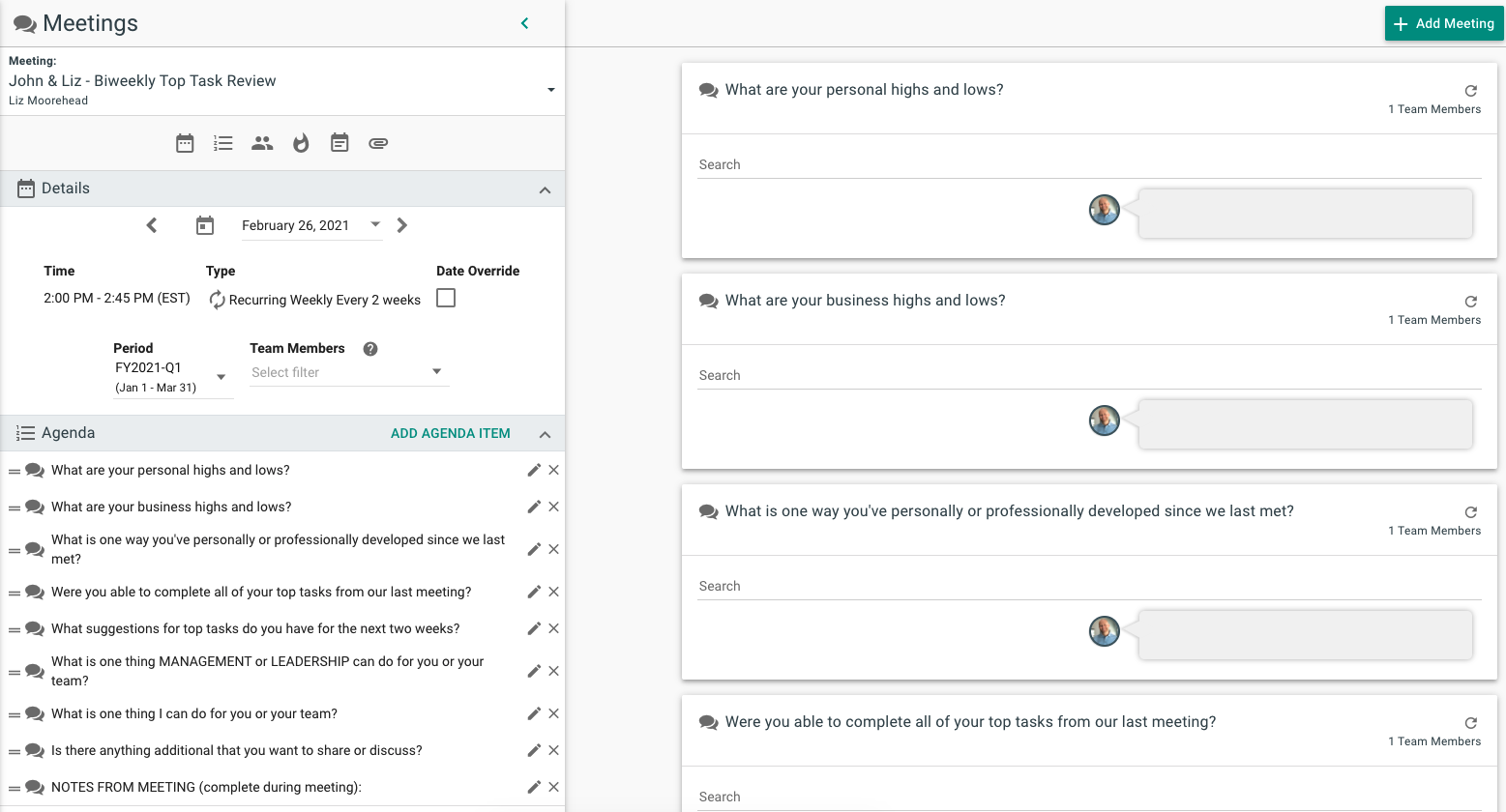Join 40,000+ sales and marketing pros who receive our weekly newsletter.
Get the most relevant, actionable digital sales and marketing insights you need to make smarter decisions faster... all in under five minutes.
You’re ready to scale your business. You know bringing core components – like content writing, video production and marketing expertise – in-house is the right approach in order to break the dependency chains on an agency forever.
You want to own your own destiny and create financial peace for yourself (and every single employee), all while making the lives of your customers better – a true win-win-win.
You have the right vision and a grand plan on how to achieve it. You are at a really exciting time in your business. Even with everything going on in the world, you are in a position to scale and grow.
So, you started moving toward your vision by adding strategic headcount... and, somehow, things have become more complicated. You find yourself in a position where you have less and less time to focus on growing customers or directly working on improving the solutions you offer.
Instead, you are now "Chief Question and Approval Officer"
You spend your day with calendar invites and Slacks coming at you from all angles. As soon as you answer one question or provide one approval, five more pop up. You are in a constant pile of communication that you can’t dig out of.
Wasn’t building a team around you supposed to free up your time so you could, you know, grow the business?
This is a common experience I not only have experienced personally, but also have witnessed over the years in some of our well-intentioned customers. The good news is there is a way out. It is possible to achieve your vision and not die a slow death by meetings.
By documenting a clear vision and strengthening how you communicate and operate, you can get to a healthy state personally and as a business.
(Your mindset makes a big difference too, but more on that later.)
It all begins with documenting your vision for your company and sharing it
There’s a universal principle of documenting your vision for where the company is going in three to five years. The vision statement – often a one- to three-page document, not a simple sentence or two – states the details of how you picture "life" at your company to be like.
For example, how much revenue you'll be generating on an annual basis, how many employees you'll have, what opportunities will be available for growth and professional development of your employees, what your product/service/solution focus areas will be, the buyer profile with whom you'll primarily do business, etc.
By painting a vivid vision, you help everyone else in the company understand where you’re going and why.
That "why" part is so critically important. Yes, you can have a specific, detailed vision for the future, but you won't be able to help others "catch the vision" until your people understand what the "why" behind it is.
Simon Sinek explains this beautifully in his famous TED talk:
By describing how it will feel for your customers when working with you and how it will feel as an employee of the company, you paint the north star of where the business is heading and why everyone should care to help get it there.
Yes, you can make your audacious vision an achievable reality
The vision should be exciting and somewhat hard. It should push your team to reach heights they may not think is possible (but obviously, don’t make it impossible).
Every time we’ve rolled out a new three-year vision statement, some of our team would think the latest proposal for the future was completely nuts. They couldn’t fathom how we’d get from where we were to what was pictured on that piece of paper.
But when you fast forward to the end of when those visions were to become reality, we’ve achieved what we set out to do and more every single time.
The more it happens, the more confident our team becomes in understanding that by planting a bullseye, we may not know how we’ll get there but we at least know where we need to go, and we always figure it out.
Although we are unique in many ways, we are not unique at IMPACT in our capacity to do this time and again. So are you.
Once you have a three- to five-year vision, you can break it down into your first set of annual priorities, and then break those down again into quarterly priorities. The priorities act as setting “the how” and focus your team to always be moving in the right direction, and are a great grounding tool for you as a manager.
The importance of your company's "operating system"
Even with the right "how" plan in place, how your company operates at an infrastructure level in three core areas – your people, your meeting rhythms, and your communication – will be the ultimate determining factor in how successful you are.
There are lots of operating systems, models and inspiration that show you how to document and educate on your vision.
At IMPACT, we’ve dabbled in several of them as we’ve experimented with what works for our business, such as Entrepreneur Operating System, Scaling Up, Small Giants, ZingTrain, inspiration from Basecamp's communication principles, and others.
IMPACT CEO Bob Ruffolo and I have been trained by some of these businesses. In fact, we spent three years as part of a Small Giants cohort visiting other businesses around the country to see first-hand how they operate, as well as what we can learn and take back to IMPACT.
Through that onsite and hands-on education, we’ve crafted what works for us here to tackle those three key areas – a strategic sythensis of several systems, but primarily Scaling Up.
And that is what I'm about to share with you.
1. Get the right people on the bus (and keep them)
At most companies, you'll have a job description, which serves two purposes:
- Attracting and recruiting talent externally to fill the role
- To hold a person accountable to the responsibilities of their role, once filled
At IMPACT, we don’t have job descriptions. Instead, we have job postings and job scorecards, which each have their own individual purpose.
Job postings are what we put out externally to attract the right applicants. We treat our job postings as landing pages that need to have a great conversion rate and convert quality candidates.
Once we have the right people and someone comes on board, they are given a job scorecard.

Above, you'll find a real-life scorecard template for one of our frontline employees. (We originally created them in Google Sheets but have since migrated them into Metronome – a growth platform for companies – which has made their use and communication around them much, much more streamlined and efficient.)
Our job scorecards are modeled off Top Grading and Scaling Up. They consist of two main sections with equal weight:
- Functional accountabilities, core competencies and metrics
- Core values
Each role has three to seven accountabilities that we can clearly say if someone did them or not when it’s time for a performance review. If you’re hiring a content manager, for example, the accountabilities should include things like:
- Content Production: You consistently write 3 new pieces of content a week and produce 1 premium content piece per month.
- Website Optimization and SEO: You spend 3-5 hours per week reviewing our analytics and optimize the website for SEO and conversion improvements.
- Social Media Engagement: You keep our social media accounts active and communicate with followers in a timely manner for 1-2 hours per week.
- Content Ideation and Team Training: You meet with the sales team weekly to discuss content and/or train them on how to use existing content to aid in the sales process.
Competencies for a content manager should include:
- Strong journalism skills and passion for interviewing subject matter experts, crafting and editing quality content pieces - both written and video.
- Self-starter who is capable of organizing your own goals and plans to hit your numbers every week.
- Ability and passion to understand analytics, numbers and measurements, and apply findings to continuously improve your work.
Metrics are usually outputs or results of the role’s accountabilities:
- X % in traffic growth month-over-month
- X % visitor-to-lead conversion rate
I mentioned earlier that core values are weighted equally when reviewing an employee.

Here's a snippet of the core values section of every IMPACTer's job scorecard, as displayed in Metronome.
If you don’t follow suit, you could end up with some brilliant jerks at your company.
We use the Talent Assessment chart from Petra Coach to ensure we have the right mix of talent who own their accountabilities and metrics, and are also a culture fit and genuinely good people.

Where someone falls in this matrix is based on an average of total scores someone receives across the three key areas of their job scorecards – functional accountabilities, core competencies and metrics, and core values.
We do reviews quarterly based on our job scorecards. Everyone always knows where they stand and knows they have a coach in their corner, their manager, to help them move into or to stay in the “A” box.
This is our key to retaining A players. We have open, honest conversations. When someone has been performing at a high level but isn’t feeling challenged anymore, we don’t throw up our hands and send them on their way out of the company.
We find a seat that they can grow into and own. This ensures our top talent is always improving, and in return, they stick with us as we grow something really special.
The best part? Our people love it. They say the reviews process has become much more transparent, and the conversations managers and direct reports have are more valuable, positive, and productive across the board.
2. Schedule the right kinds of meetings (not just more of them)
The key here is being proactive about when and how you spend time with your people. We follow a meeting rhythm that buckets management time on one day so the rest of the week can be spent executing.
The specific meetings we choose are meant to be regular, proactive touchpoints to get in front of issues, provide feedback the team needs and to continuously reinforce the vision and how each person or team’s work fits into it.
🔎 Related: Free meeting agenda template (+ business meeting tips)
If you’re just starting out by bringing your marketing talent in-house, one of the first standard meetings we recommend to our clients is a weekly (or biweekly) revenue team meeting. This is your opportunity as a leader to hold the two teams accountable and it is your team’s opportunity to get feedback and approvals they need from you.
This type of meeting cuts down on the in-between conversations and shoulder taps and allows them to get to work. Unless it’s urgent, anything else should be held for the next meeting.
Another key meeting we recommend for people managers having a two-week top task review meeting with your direct reports. The typical agenda of this kind of meeting starts with checking in on your direct reports’ metrics and how they’re performing, as well as any priorities they may be owning that roll up to the company’s priorities.
We also recommend questions like:
- What is one thing I can do as your manager to better help you?
- Do you have any ideas, requests, or questions for leadership?
- How have you professionally or personally developed since we last met?
At IMPACT, many of our managers use Metronome to run those meetings, having their direct reports answer these questions in advance, so the conversations during those top task reviews are more focused and substantive, rather than acting as a top-level, fact-finding mission:

As you review where they stand in performance, you will most likely have some topics or issues to discuss for the bulk of that meeting to help them figure out how to improve or hit their metrics. What you end up discussing in the issues portion will change each time, but the general structure should not.
This allows the employee to know where they stand. They shouldn’t be surprised in a performance review if you are looking at how they don’t every two weeks.
As you wrap up the meeting, you and the employee decide on the most important things they should be working on and the priority of each over their next two weeks. This gives the employee clarity and alignment with you. You’re not telling them how to do every little thing. You’re simply helping them prioritize and being proactive in staying aligned.
This also cuts down on in-between meetings because the same principle follows – unless it’s urgent, they can add anything to their list of topics to address with you when their next two week top task meeting rolls around.
3. Nail down your internal communication strategy and guidelines (even if you think you're good already)
The more people you bring onto your team, there will be a lot more communication going on. If you’re just relying on Slack or email to keep it all straight, trust me, it will get very painful.
Unfortunately, it's the kind of pain many of us have just come to accept as the unavoidable cost of doing business (internally) in the digital age.
So, the last piece of advice I have for all of you growth-focused business leaders out there with big visions – one that we have learned the hard way – is to set some communication standards. Even (and especially) if you think you're already crushing the communication game.
Refining your meeting rhythm will significantly help with this, but when there are times for communication around meetings or in preparation for a meeting, standardizing the norms in your organization will save you a ton of time and ensure important messages aren’t missed.
I’d recommend you figure out how to support these three types of communication:
- Asynchronous, which means you are not communicating in real-time with each other; instead, you're leaving messages for later response. Creating a message board post in Basecamp is an example of asynchronous communication.
- Synchronous, which means you are communication in real-time with each other; for example, instant messaging over Slack is synchronous.
- Urgent, which is synchronous communication that can't wait, such as communicating about your website going down. That wouldn't be a casual Slack message that someone could see in between their tasks.
Below are some of the key tools and guidelines we have to draw inspiration:
Asynchronous (most used)
- In addition to scorecards and reviews, we also rely on Metronome to house our vision, priorities, and action items related to our priorities.
- We use Basecamp for messages and notes that people need to see but are not urgent and don’t require interaction or engagement within a day or so and for messages with a longer shelf life. Each team has a Basecamp portal, each client has one for inter-team and client communication, and we have an IMPACT HQ portal for all-company messaging.
- Vidyard to record something that’s not easy to write out and allows us to not schedule extra meetings to communicate a one-way message clearly.
- Our project management software for internal communication about our work.
- HubSpot for internal communication during our sales process and ongoing client records.
- Google Drive, Docs, Sheets, Slides, etc for collaboration remotely.
- Trello to manage the constant production of our content and video strategies.
Synchronous
- In-person meetings, although often there’s an asynchronous pre-read in the team’s Basecamp beforehand, so those meetings are more productive.
- Zoom meetings, again, often with pre-reads available asynchronously.
- Slack for quick chats and fun things.
Urgent (rarely used)
- Specific Slack channels
- Text messaging/actual phone calls
Rather than set out a bunch of super specific rules for each channel, we opted to provide context by straight up following Basecamp’s internal communication principles in how we’d like to be as an organization, so in each micro-instance, the team can make their own decision on the best way to communicate.
Remember, clear is kind
OK, as I told you at the beginning, your mindset is critical through all of this. Everything I’ve presented here is that your job isn’t to hire a bunch of people that work magically independently so you keep your head down to “work.”
Your job is to provide clarity upfront and continuously for your employees. How you do that is from the tools and structure I presented above.
That being said, the most fair –and the most rewarding – thing you can do as a leader is to be clear with your people. This helps them understand what success is and as they achieve it, they grow in their careers while helping you grow your business. That way, everyone wins.


Register for IMPACT Live in Hartford CT, October 14-16!

